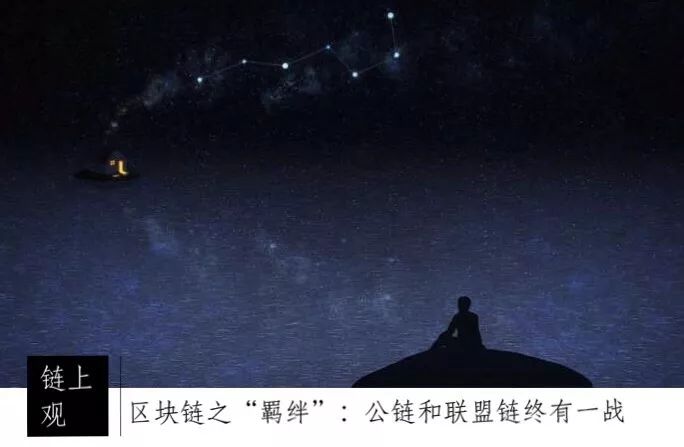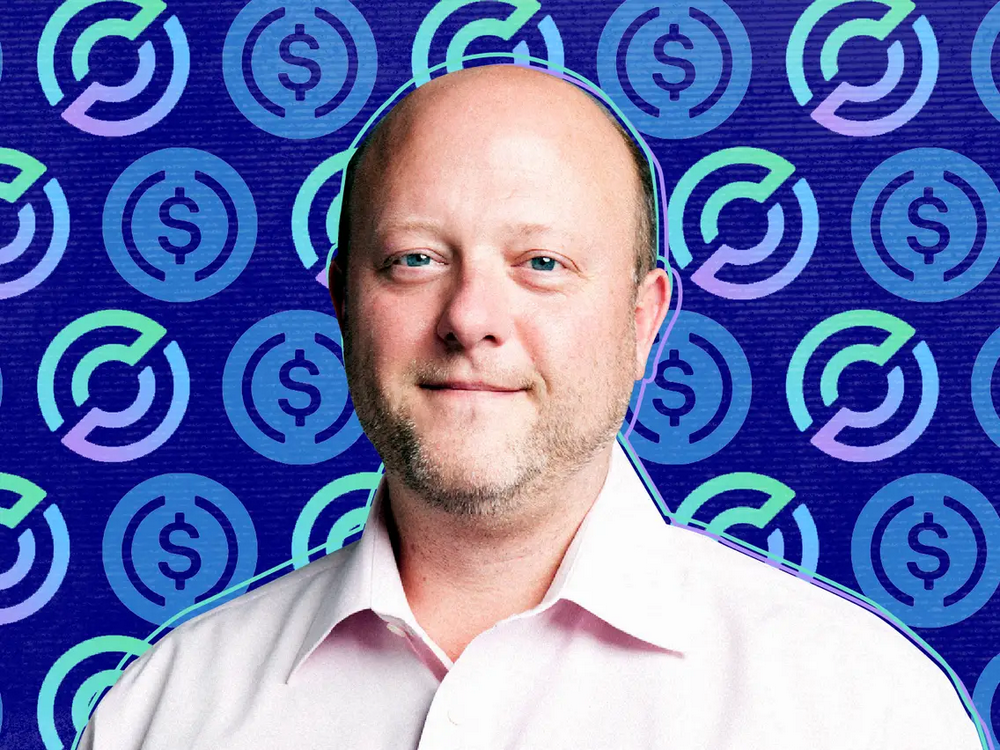The "fetters" of the blockchain: the public chain and the alliance chain finally have a battle


By Hao Tian
The term "fetters" is often used in Japanese culture to indicate relationships and bonds between people.
What we are familiar with in the Naruto anime is the bond between people in the ninja world. Among them, Uzumaki Naruto and Uchiha Sasuke's constant "fetters" are the most thought-provoking and will break your tear glands.
As for the ninja world, Naruto and Sasuke had painful genocide when they were young, but when they grow up, their "fetters" are quite different.
- On the eve of the birth of China's digital currency: the pilot of the central bank, the four major horse races, can it lead the world?
- Lingting 2020 New Year's Eve speech lineup announced, 5 highlights and big exposure
- Babbitt Column | Deng Jianpeng: On USDT Risk and Protection of Chinese Investors' Rights
Naruto's fetter is that "love" can affect everything, and hopes to rely on his own strength to make the world of the ninja world united. There is harmony and love between the five shadow nations, without hatred, disputes and war.
Sasuke's frustration is that the world will never be "peaceful". He would rather bear all the hatred and pain and rebuild an ideal country so that the entire world of ninjas can truly realize love and peace. This is exactly the same as the "Infinite Moon Reading" world that his ancestor Uchiha Ban tried to build (a technique to control the consciousness of all people and let them live in dreams).
Because the ninja world always has "fire, earth, thunder, wind, water" nation-to-nation confrontation and strife in terms of power and resources.
Sasuke believes that short-term peace is only temporary, and peace can only be achieved if he becomes the common enemy of the world.
Naruto's "forbearance" is to protect his partners anyway, not to abandon or give up.

In the blockchain world, the relationship between "public chain" and "alliance chain" is just like the "fetters" between Sasuke and Naruto.
Some people say that the public chain is the ideal country pursued by geeks, but it is hard to achieve it. The alliance chain is the ultimate destination of value landing. Others say that the alliance chain is a pragmatic country that adheres to "value" and loses the zone Blockchain "decentralized" soul.
I said that the public chain and the alliance chain are a pair of difficult brothers and brothers. One is to expand the technology and the other is the landing application. In the short term, the "alliance chain" has a more market.
01
Like the war crisis facing the ninja world, the big explosion of information has seriously diluted the trust between people, and the Internet world urgently needs to reshape the trust relationship between users.
As a result, Satoshi Nakamoto created Bitcoin in 2008, and in the following years, a big trend of "blockchain technology" was extended. All of this is just like the originator of the ninja, the six Taoxian people, built a ninja world centered on "Chakra".
Blockchain technology is exactly the "fetter" in the value Internet world, and it is a "trusted protocol" that reshapes the relationship between people.
We define the blockchain as a "decentralized, open, transparent, and traceable" systemic network. Anyone has the right to read the transaction content on the network, and the transaction information sent to the system can be quickly verified. confirm.
If the network is open to the entire network, it will be a "public chain" if there is no user authorization mechanism, and if the network is only accessible to authorized nodes, and the user's viewing rights are also restricted, it will be an "union chain".
As far as the technical core of the public chain and the alliance chain are concerned, it is nothing more than "distributed data storage, nodes participating in bookkeeping and block verification, and right verification". The biggest difference between the two lies in the "node governance authorization mechanism" and "open scope", which also determines their respective implementation difficulties.
The public chain is intended for users all over the world, so there is an impossible triangle problem of "security, efficiency, decentralization", and it is restricted by the verification rate between nodes, and its transaction processing efficiency is relatively slow.
The entry threshold for the alliance chain is that its authorized nodes and users are more like a local open shared database, so the efficiency will be improved a lot.
Whether the public chain is more important or the alliance chain is more reliable, it is difficult to have a unified value evaluation standard.
02
Originally Bitcoin was just a peer-to-peer electronic cash payment system, a mature application based on blockchain technology. Ethereum's founder V God innovatively refined the hard core architecture of Bitcoin's "asymmetric encryption technology" and "distributed node verification", developed a general technical architecture of "smart contracts", and officially opened the blockchain A new era of world public chain competition.

This model breakthrough not only brought ETH to the height of analog BTC, but also brought a large number of public chains into the public view, including: EOS, TRX, AE, ONT, IOST, BTM, etc. They all have similar visions, build a set of underlying technical standards and protocols, and then become a universal infrastructure for the new world of blockchain in the future.
In the final analysis, the public chains are vying for innovation, and the main challenge is the "impossible triangle" problem of the blockchain trusted protocol technology to make it possible. "Security" is not much to say. Blockchain digital assets are all on the chain. If security cannot be guaranteed, nothing can be said. The direction of everyone's efforts is basically to solve the paradox of "decentralization" and "efficiency".
Judging from the current "productivity" development process of Internet communications, the operating efficiency of the centralized network world has been extremely fast. It is said that the Double Eleven Alibaba Cloud system has achieved a processing capacity of 540,000 transactions per second, and Bitcoin can only process 7 transactions per second. Ethereum is said to be able to achieve 3000 + TPS and EOS after this Istanbul upgrade. The pie of millions of TPS is actually only able to process 4,000 transactions per second.
Without decentralization, but simply on "efficiency", the Internet slags blockchains in seconds.
However, the processing speed in the Internet environment is the speed matching under the machine-to-machine relationship. The main body behind the machine is only Alibaba, which is an absolute centralized service.
In order to ensure the "decentralization" of information transmission, the blockchain world needs to add N different responsible persons to participate in the verification of the machine and the speed-matching process of the machine. This "verification of power" process is currently relatively slow. , Greatly affecting the efficiency of the public chain TPS (system throughput).
Taking Bitcoin as an example, according to the limitation of Satoshi Nakamoto's longest chain consensus, theoretically, after a transaction is packaged on the chain, it will take 6 blocks of time to confirm (about an hour) before it can finally determine the right to achieve the purpose of immutability. This is simply intolerable in the Internet world where everyone is used to high-frequency transactions.
In order to accelerate the rate of verifying the weight between nodes and thus improve the efficiency of TPS, the mainstream public chains currently provide different solutions:
1) Part of the public chain, such as Ethereum, chose to optimize the technology such as layer 2, sharding, and beacon chain. It tried to increase the speed by opening up a dedicated fast lane for ETC by stripping out key information.
2) Some developers use the public chain as a side chain extension layer to assist the network, and only upload key asset settlement information to the chain to improve efficiency, such as the Lightning Network;
3) Another part of the public chain has optimized the consensus mechanism, such as EOS, changed the POW consensus mechanism in the past, and changed it to DPOS's entrusted proof of equity mechanism, using only 21 super nodes for efficient block production.
The sea of stars is ahead, but it is covered with thorns and mud.
The current public chain "brave" games seem to have some vignettes, such as: trapped in the chaotic quagmire of the Token economic model, unable to extricate themselves, and after the main online launch, there is no transaction volume and no users. Can't see hope and so on. Too many technical difficulties and ecological problems need to be faced and overcome.
Generally speaking, there are not so many people setting standards and specifications at the protocol layer. Often, there are one or two general-purpose protocols, and it is normal in the era of protocol-based applications to flourish. But now it is exactly the opposite. The application layer has not seen a few reliable projects. Instead, the "politicians and lawmakers" at the protocol layer have pointed out the block chain. (Some of them are serious about doing things, I'm afraid only they know it).
03
In this tragedy of the public chain battle, some people began to think, if the pursuit of "decentralization" can not get positive feedback, why not go next.
Finally, the decentralized Flag of blockchain technology has diverged.
Some people begin to think that absolute "decentralization" is not so important. Relative decentralization can be used to greatly improve efficiency and accelerate the implementation of blockchain technology at the application layer.
Especially after 1024, the national top-level design made blockchain technology a core breakthrough. This has allowed most people to see the possibility of blockchain technology combining with vertical fields such as finance, law, medical, energy, public welfare, and government affairs, and let everyone see that blockchain technology is not an "air tower" or "currency speculation." The Garden of Eden "has great practical application value.

Utilizing the advantages of blockchain technology in product traceability, immutability, and distributed databases can take the lead in application scenarios such as supply chain finance, cross-border payments, electronic certificate deposits, and product security.
In fact, there have been a large number of companies that have done "alliance chain" solutions in recent years, such as: Alibaba, Tencent, JD.com, Wanxiang Blockchain, Funchain Technology, etc. There are also foreign countries including R3 blockchain financial alliance, Hyperledger Hyperledger, Enterprise Ethereum Alliance (EEA), etc.
On the surface, the alliance chain verifies the power through the nodes under the authorization relationship, avoids the difficulty of complete decentralization, and improves the efficiency of collaboration, but it also faces many obstacles.
The public chain relies on the packaged token rewards produced by the nodes to support the operation, but what should the alliance chain that does not see benefits in the short term drive?
1) Led by leading companies in subdivided industries, open up some data and attract SMEs to join in to build an open sharing system. Leading companies make monopoly money to some extent. Why should they make profits?
2) It is jointly established by SMEs in various industries to counter the monopoly of leading enterprises. Everyone is a small shrimp, who will come out of the organization cost?
3) Sovereign nations will make unified arrangements to endorse the "Union Chain" in various industries with endorsement of power and trust. This is not a question we can decide.
It is not difficult to see that it is not easy for the alliance chain to achieve large-scale popularity.
Moreover, there is still an unanswered question at the consensus layer, throwing away the soul of "decentralization", is the alliance chain still the original "blockchain"? Is the node distribution under the authorization mechanism pseudo-decentralized, whether the openness under public access supervision is restricted, etc.?
04
Naruto and Sasuke in the ninja world, because of the "fetters" are different, in the end of the war in the valley.

What if the "public chain" and the "alliance chain" must be determined?
The public chain has established a new set of rules and orders, with a token incentive model, an intelligent contract supercomputer execution mechanism, and a new ecosystem of DApp ecology. Once the contradiction between decentralization and efficiency is resolved. In the future, the blockchain public chain will build a new value Internet world that is cross-border, DAO organization, open, fair, transparent, and privacy-protected.
In the long period of application of the public chain, the alliance chain is likely to take the lead in the era of the Cambrian explosion of the blockchain. By then, the financial system including banks, insurance, and securities, some industries with upstream, midstream and downstream, group companies, industry associations, etc. will try the organizational format of the alliance chain to optimize traditional business processes. Based on the data and information shared by the vertical industry alliance chains, some toc third-party application entrepreneurial waves will also emerge, and everyone will soon be able to enjoy the convenience of the blockchain alliance chain era.
In the short term, the alliance chain can give the market confidence in the "application layer", and also give the public chain a respite in the mud. In the long run, I believe that the "public chain" can become the cornerstone of the future digital economy era. why?
An information transmission system can be divided into protocol layer, extension layer, and application layer.
At that time, American scientists Kahn and Cerf jointly invented the TCP / IP protocol, and then the SMTP protocol for mail transmission, and later the HTTP protocol for the World Wide Web era. Until after the popularity of PCs and smartphones and the spread of Internet information transmission technology to ordinary people's homes, who knows how the lowest-level protocol was formulated? The realization of the value of the public chain in the blockchain world protocol layer will also go through this process.
This battle, talk about subversion, this way, the tribulation continues.
Like the "technology promotion, cognitive transformation, and habit formation" that the Internet has to go mainstream, the popularity of blockchain technology will not be overnight. The short video appeared around 2013, but did not catch on until 2017. The 4G bandwidth upgrade behind it, the popularity of smartphone hardware, the maturity of online payment systems, and the development of consumer spending habits are all contributing factors. Blockchain technology is also the same, and it will need to be gradually popularized under the combined effects of 5G, graphene technology, public chain, alliance chain, and DApp killer applications in the future.
We return to the world of ninjas, and in the bloggers after the blast of "Naruto", the world war of Ninja still inevitably broke out.
"Naked man" Naruto, who embraces "love and peace", after all, sees the war he is least willing to see, and although the extreme world of Sasuke's "Infinite Month Reading" peace world is difficult to achieve, it is more worth exploring And pursuit.
05
We regard the rapid development of humans on the Internet in the past few decades as a breakthrough in "productivity." In the next few decades, humans are likely to usher in a "return to science and technology" and seek evolution in "production relations." .
Facts have proven that the era of blind pursuit of the limit of "productivity" may come to an end. The physical limit of 5nm for semiconductors is approaching, Moore's Law will also be invalidated, and the productivity of human science and technology will soon reach the ceiling.
We should be clear that technology can give birth to the market, but if the technology is immature, the market will be difficult to spread. In all vertical fields where AI replaces labor, wearable devices replace mobile terminals, and the VR world replaces reality, we have encountered the problem that technology is still immature and the market is over-extended. Since the rapid development of productivity will slow down, why not reorganize the old mountains and rivers and change the "production relations"?
In essence, blockchain technology is a kind of "production relationship". It is a kind of "fetters" that reorganizes the chaotic order of the information Internet and builds an "open, honest, and transparent" value Internet world.
Perhaps, Satoshi Nakamoto is also a fan of "Naruto". He uses the Japanese alias and seeks this "fetter".

Awareness evangelist of blockchain value, senior blockchain practitioner. There is no concept of tallness, no sparse technical description, only the most popular business, the most sensitive perspective, and the most unique insights. I am still a poor elementary school student in the blockchain industry. All the thoughts and thoughts in this article are broken thoughts. If you are in the circle, do n’t laugh. Welcome to discuss. Author's Wechat: tmel0211 WeChat Public Account: ai-heikeji If you need to reprint, please add me to WeChat to apply for a whitelist. If you agree with my point of view, you can also add me and pull you to join the on-chain readers exchange group.
We will continue to update Blocking; if you have any questions or suggestions, please contact us!
Was this article helpful?
93 out of 132 found this helpful
Related articles
- Microsoft Azure blockchain platform opens more features, launches token and data management services
- How many blockchain predictions in early 2019 have been implemented now?
- Perspectives | Ten Years of DeFi
- Regulatory sandboxes respond to blockchain innovation? Bank application scenarios are dominated by intermediate business
- Istanbul Fork Improves Ethereum Performance, Can Ethereum Become a "World Computer"?
- Introduction: Different types and similarities of Rollup for blockchain expansion
- Bitcoin-related products become popular among millennials, surpassing Disney and Microsoft stocks






